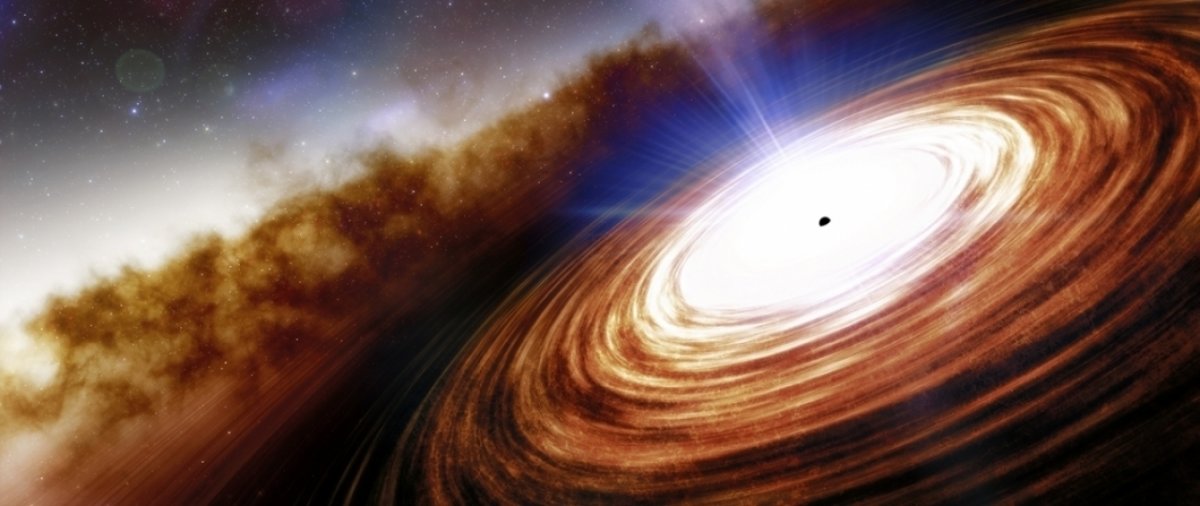Supermassive black hole: oldest and most distant quasar contradicts theories
Source: Heise.de added 15th Jan 2021A group of astronomers has discovered the oldest known quasar to date. It is so massive that two theories about the formation of such a gigantic black hole can be ruled out so early after the Big Bang, they now explain. At least they see J 0313 – 1806 in one state only 670 Millions of years after the creation of the universe and at the same time the black hole already has a mass like 1.6 billion suns. It also hurls matter at a fifth the speed of light. The discovery allows a new insight into the formation process of huge galaxies in the early days of the universe.
Not compatible with all theories Quasars are the active nuclei of distant galaxies that shine extremely brightly because matter falls into their central supermassive black holes and is heated enormously in the process. They are therefore among the brightest objects in the universe and often shine much brighter than their galaxies. With such early and at the same time massive quasars like J 0313 – 1806 it becomes more and more difficult for researchers to explain their creation in the comparatively short time. The previous record holder was only 20 millions of years younger than J 0313 – 1806, but not nearly as massive, explain the researchers. The black hole that has now been discovered has twice its mass.
As the scientists continue to write, this quasar cannot be explained by models on massive stars consist of hydrogen and are based on collapsing, dense star clusters. These two theories do not allow such massive quasars so early after the Big Bang. Even if J’s black hole 0313 – 1806 is already 100 would have arisen millions of years after the Big Bang, it would have already been 10. 000 must include solar masses, they write. So it must have come about through other processes, explains Xiaohui Fan of the University of Arizona. Instead, it must have arisen directly from cold hydrogen gas, without stars as the starting material.
Notes on the early history of galaxies In addition also give J 0313 – 1806 an indication of when quasars started the process of star formation to slow down in large galaxies by sucking up the necessary raw material. This process could have started much earlier than previously assumed, the scientists write. According to their models, the supermassive black hole in the center of J 0313 – 1806 devours the equivalent of every year around 25 solar masses. At the same time, however, gas will be pushed out of the galaxy, which will be lacking for star formation. The researchers have determined that stars with a total mass of around 200 suns are still formed there every year – there is only one in the Milky Way.
(mho)
brands: Discovery Galaxy New One other media: Heise.de keywords: Galaxy
Related posts
Notice: Undefined variable: all_related in /var/www/vhosts/rondea.com/httpdocs/wp-content/themes/rondea-2-0/single-article.php on line 88
Notice: Undefined variable: all_related in /var/www/vhosts/rondea.com/httpdocs/wp-content/themes/rondea-2-0/single-article.php on line 88
Related Products
Notice: Undefined variable: all_related in /var/www/vhosts/rondea.com/httpdocs/wp-content/themes/rondea-2-0/single-article.php on line 91
Warning: Invalid argument supplied for foreach() in /var/www/vhosts/rondea.com/httpdocs/wp-content/themes/rondea-2-0/single-article.php on line 91
